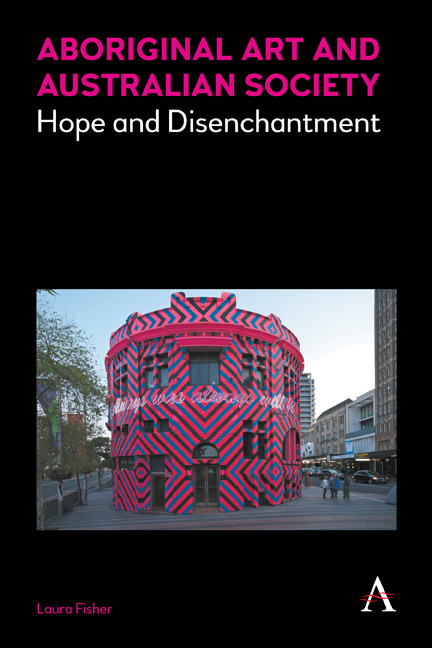Book contents
- Frontmatter
- Dedication
- Contents
- Preface and Acknowledgements
- Introduction
- Part I Governance, Nationhood and Civil Society
- Chapter 1 New Intercultural Relationships in the Post-Assimilation Era
- Chapter 2 Aboriginal People Mobilising Aboriginal Art
- Chapter 3 Understanding Aboriginal Art Subsidy
- Chapter 4 The State Mobilising Aboriginal Art
- Chapter 5 ‘Aboriginal Culture’ at the Nexus of Justice, Recognition and Redemption
- Part II Contemporary Aboriginal Art in the 1980s
- Part III Negotiating Difference
- Part IV Aboriginal Art, Money and the Market
- Conclusion
- Notes
- References
- Index
Chapter 3 - Understanding Aboriginal Art Subsidy
from Part I - Governance, Nationhood and Civil Society
Published online by Cambridge University Press: 22 July 2017
- Frontmatter
- Dedication
- Contents
- Preface and Acknowledgements
- Introduction
- Part I Governance, Nationhood and Civil Society
- Chapter 1 New Intercultural Relationships in the Post-Assimilation Era
- Chapter 2 Aboriginal People Mobilising Aboriginal Art
- Chapter 3 Understanding Aboriginal Art Subsidy
- Chapter 4 The State Mobilising Aboriginal Art
- Chapter 5 ‘Aboriginal Culture’ at the Nexus of Justice, Recognition and Redemption
- Part II Contemporary Aboriginal Art in the 1980s
- Part III Negotiating Difference
- Part IV Aboriginal Art, Money and the Market
- Conclusion
- Notes
- References
- Index
Summary
In order to grasp the relationship between Aboriginal art and the state, it is necessary to approach the problem from two directions: to understand the principles that have informed the subsidy of Aboriginal art (to be discussed here) and to understand how Aboriginal art has been mobilised in symbolic ways in the sphere of cultural governance (to be discussed in the following chapter). One of the distinguishing characteristics of Aboriginal art subsidy is that it has in part been premised on the idea that a form of work is being undertaken and needs to be encouraged. My aim here is to show that Aboriginal art has been subject to much more complex governance agendas than other types of government funded art production, and further, to reveal how instrumentalist forces have shaped Aboriginal art practices, meanings, and the trajectory of the movement as a whole.
‘Meaningful Work’: Making Sense of Aboriginal Art Subsidy
This is a good thing for these people. It is meaningful, culturally appropriate work in a place where there is none. They also like doing it. They paint Monday to Friday from 9am to 5pm. They don't paint weekends because the art centre staff need to rest, but if it weren't for us, they'd come and paint here every day of the week. (Gloria Morales, coordinator at Warlukurlangu Artists in Yuendumu, quoted in Genocchio 2008, 93)
In general, Aboriginal art's subsidy has been viewed by governments as a ‘means to combine cultural maintenance with economic activity for both Indigenous and national benefit’ (Altman et al. 2002, 2). Since the 1970s, the Aboriginal art industry has been subsidised by sources in state, territory and federal governments, including the Aboriginal Arts Board within the Australia Council, Aboriginal Affairs agencies, the Aboriginal and Torres Strait Islander Commission (ATSIC) (now defunct) and arts ministries within the cabinet. The industry was first formally subsidised by the federal government in 1970, when the Aboriginal Arts Advisory Committee was formed within the Australian Council for the Arts (which had been established two years prior). The Committee's budget grew from $60,000 in 1970 to $500,000 in 1972 (Roughsey 1976, 236; Thompson 1972). In 1971, the Commonwealth also established Aboriginal Arts and Crafts Pty Ltd, to take responsibility for marketing Aboriginal art and wholesaling works obtained from remote communities to retailers or selling them in its own outlets in major cities (Peterson 1983).
- Type
- Chapter
- Information
- Aboriginal Art and Australian SocietyHope and Disenchantment, pp. 41 - 48Publisher: Anthem PressPrint publication year: 2016



